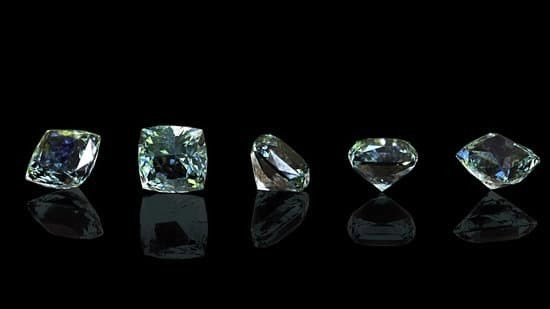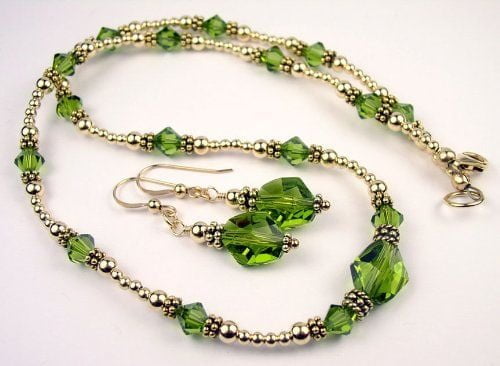Introduction- Benefits and Reasons To Hallmark Jewelry
Hallmarking jewelry is a process that involves the application of an official mark that provides an assurance of quality to the owner. It can include both an identification of the type/quality of metal used and information about the manufacturer or retailer. This protects not only the buyer, but also adds value to the piece of jewelry itself.
Not only does hallmarking jewelry provide assurance to a buyer – it also gives them peace of mind that they are purchasing genuine metals and stones. Hallmarked jewelry pieces can cost more, but this extra cost reflects a guarantee in quality which means you get what you pay for – something that has been checked for quality and professionalism. Additionally, if you come to sell your jewelry, having a hallmark can lead to a higher resale value as interested buyers will have more confidence in its authenticity and craftsmanship.
The actual process of hallmarking jewelry is quite straightforward, though it often depends on each individual country’s regulations. Generally speaking though, firstly any piece of jewelery must be examined by an assay office (an independent testing centre) who will issue a certificate confirming it is genuine before it can be Hallmarked accordingly. For example when hallmarked for gold; depending on its purity level (750/900/950 being the common standards) mark showing this percent is punch-stamped onto the surface using unique tooling equipment. Other important elements such as the place where it was made plus any other special marks from the authorities are also included once approved.
What Does a Hallmark Entail and Common Hallmarking Languages
Hallmarking is a process required by law in many countries and jurisdictions. It requires the assay of precious metals – such as gold, silver, platinum, and palladium – ensured to meet minimum standards of purity. In this way, buyers can guarantee that any appurtenances advertised as containing these elements are indeed what they claim to be. Hallmarks will usually contain an identifying mark (such as an animal or signet stamped into the piece), along with a set of letters or symbols denoting both the type and size of metal within.
Common hallmarking languages include English stamps for pieces made in England, German stamps for items from Germany, Finnish stamps for jewelry made in Finland, and French stamps for items originating in France. Additionally within Europe there are several sets of standard marks which indicate the metal’s weight or quality; often a composite punch combining letter codes and numeric digits that have been adopted across several countries where the given metal is mostly manufactured. Outside of Europe nations may use their own sets of national standards but worldwide organizations have also laid out some unified criteria when it comes to certifying precious metal content.
Process of Hallmarking Jewelry
Hallmarking jewelry involves a regulated process wherein the purity of gold, silver and platinum are determined and verified. A hallmark (usually a stamp) is placed on each piece of hallmarked jewelry to certify its authenticity. Here’s an overview of how it is done:
1. The first step in the jewelry hallmarking process is identification—one must first identify the particular metal being tested and marked. This will usually involve testing for elements like carbon, zinc, selenium, boron, or other chemicals with color-change tests or acid testing.
2. After identification, weighing is the next step. This involves using specialized scales that can weigh down to the hundredth part of a gram and determine precise levels of accuracy. Weighing ensures that the metal contains the proper quantity as set by regulation standards for each level of purity (i.e., 10K gold, 14K gold).
3. Once identification and weighing are complete, the jewelry can be imprinted with an official metal Hallmark Seal indicating the item’s certified actual weight in ounces or grams, metal type (such as 24K Gold), and country—along with assurances that confirm consistency in metal content. In addition to providing authentication on precious metals such as silver or gold; hallmarks also provide assurance that gems are ethically sourced and free from conflict diamonds/minerals etc.
Necessary Tools For Hallmarking Jewelry
Hallmarking jewelry is a multi-step process that involves creating a lasting impression on an item. In order to properly hallmark jewelry, you will need access to a few essential tools. These include a hammer, punches, files, letter and figure stamps, and an anvil or workbench. Depending on the particular design you are trying to create, additional tools such as soldering irons, engraving machines, furnaces, and molds may also be required.
The hammer is used to create the impression in the metal by pounding it against the surface of the anvil or workbench. The punches are used to shape particular sections of the item where lots of detail needs to be present in order for it to stand out. A file helps finish pieces off and make sure all edges are smooth so that no catches or rough edges remain after hallmarking. Letter and figure stamps enable you to inscribe letters or numbers according to your specifications. Soldering irons may also be necessary in order to permanently attach two elements together. Engraving machines can be used if intricate designs need to be made into the piece whereas furnaces help melt down metals before hallmarks are applied. Lastly, molds are required when certain shapes need creating or copying in order for successful completion of the job at hand.
How To Spot a Hallmark on a Piece of Jewelry
Hallmarks are an important part of jewelry; they not only help identify the age, country of origin, and manufacturer of a piece of jewelry but can also provide insight into its authenticity. Most countries have distinct hallmarks that jewelry makers and goldsmiths must use to indicate the purity of silver or gold used in their designs. Spotting a hallmark on a piece of jewelry is relatively simple as long as you know what to look for.
Hallmarks typically consist of symbols, letters, or numbers that correspond with regulations issued by regulatory organizations and governments. In the United Kingdom, these hallmarks are managed by the London Assay Office, who sets the regulations on materials and gold content within a piece. Among the marks is usually one that identifies the maker along with details about metal purity and year made. The hallmark will be stamped on coins, bars or jewellery pieces (such as rings) discreetly in an area that can only be seen with magnification such as inside clasps or behind earrings fragments. It is important to check both sides of earring findings for hallmarks as often only one side is stamped with them.
In addition to providing assurance about metal purity levels, looking for hallmarks also enables wearers to ascertain whether the item is vintage or antique – two labels often confused with each other even though there are differences between them both. Vintage items must be more than 20 years old while antiques must be over 100 years old; thus any piece bearing hallmarks from before 1900 would definitely classify it as an antique!
Hallmarking Best Practices
Hallmarking jewelry is the process of stamping it with identifying marks that denote quality, type of metal, purity or origin. It’s an important step in the jewelry production process and can be done by both professionals and individuals at home. However, there are a few best practices to keep in mind when hallmarking your jewelry to ensure the best results and precision:
First, make sure to use appropriate tools and materials when conducting the actual hallmarking itself. An engraving machine is preferred so that all details are precise and accurate. Additionally, you should always clean the surfaces where you are performing the hallmarking before proceeding to avoid any unwanted pieces of dust or dirt from appearing on stamped areas.
Another critical aspect of hallmarking is knowing what marks to actually put on your jewelry. The choice will depend largely on your goals such as denoting gold purity or indicating a particular brand associated with your item. Before beginning this process, make sure that you are aware of each type of mark necessary for meeting national requirements in your country.
Finally, confirmation hallmarking should always happen at a qualified assay office where all relevant tests can be conducted with accuracy and precision. To receive a sealed quality guarantee certificate for your items, this extra step is essential in reassuring customers that their purchase was made with optimum assurance and care possible.
Conclusion
Hallmarking jewelry is the process of legally stamping gold, silver or platinum jewellery with an official mark. This legally binding stamp indicates that a specific piece of jewelry has been independently verified for its quality and so, provides authenticity for the customer. Hallmarking also serves to protect consumers from purchasing jewelry that is not adequately made or contains inaccurate descriptions. When shopping for a valuable piece of jewelry, it is important to check that it carries a hallmark.
The advantages of legally hallmarking jewelry are vast, as it provides customers with confidence and peace of mind in the knowledge that they are buying genuine and compliant pieces of jewelry backed by legislation. Hallmarking also guarantees transparency throughout the entire manufacturing process; guaranteeing quality standards being met by adhering to strict guidelines put forth by relevant authorities. Finally, hallmarking helps to protect consumers from being taken advantage of and sets out industry-wide standards to ensure fairness in pricing and trading. Knowing that a piece of jewelry has been hallmarked can provide an additional level of assurance for customers when making these kinds of purchases.

Welcome to my jewelry blog! My name is Sarah and I am the owner of this blog.
I love making jewelry and sharing my creations with others.
So whether you’re someone who loves wearing jewelry yourself or simply enjoys learning about it, be sure to check out my blog for insightful posts on everything related to this exciting topic!





